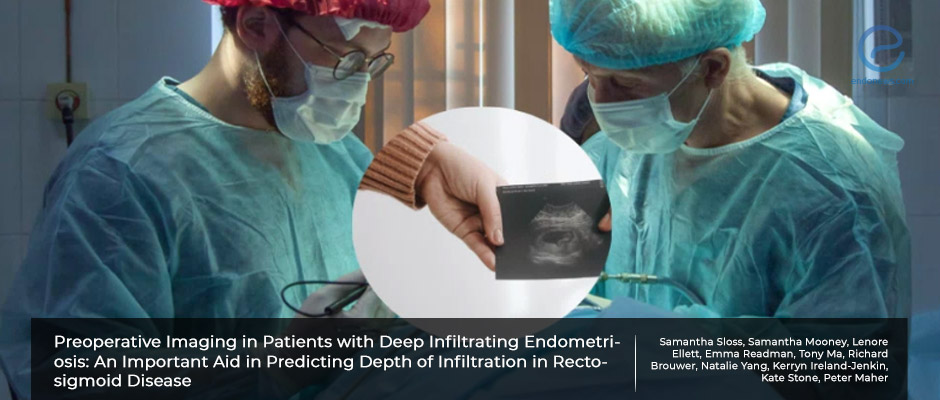Imaging Techniques Able to Predict Depth of Endometriosis Before Surgery
Apr 15, 2022
TVUS and pelvic MRI performed by a specialist can predict the depth of rectosigmoid endometriosis before surgery, a new study shows.
Key Points
Highlights:
- Transvaginal ultrasound (TVUS) and pelvic magnetic resonance imaging (MRI) can accurately predict the depth of rectosigmoid endometriosis before surgery.
Importance:
- These tools can help predict, in a non-invasive manner, what to expect from the operation before it is actually started.
What's done here:
- Researchers conducted a retrospective analysis to determine the diagnostic accuracy of TVUS and pelvic MRI compared to histologic specimens obtained during surgery.
Key results:
- Both TVUS and pelvic MRI could predict the depth of rectosigmoid endometriosis in 92% of cases.
- TVUS was sensitive in predicting rectal wall involvement.
- Pelvic MRI was highly sensitive and specific in predicting rectal wall involvement.
Limitations:
This is a single-center study and more research is needed to assess the sensitivity and specificity of the imaging techniques in order to confirm these findings.
Lay Summary
Transvaginal ultrasound (TVUS) and pelvic magnetic resonance imaging (MRI) performed by a specialist can accurately predict the depth of rectosigmoid endometriosis before surgery, according to a new study published in the Journal of Minimally Invasive Gynecology. Both approaches are similar in assessing the depth of rectal wall involvement, according to the authors of the study who said that “their use is justified in the preoperative planning of these gynecologic surgeries”.
It is still very difficult to diagnose and assess the extent of endometriosis without surgical intervention.
Here, a team of researchers led by Dr. Peter Maher conducted a retrospective analysis to determine the diagnostic accuracy of TVUS and pelvic MRI compared to histologic specimens obtained during surgery.
The researchers analyzed a total of 194 women who underwent preoperative discussion. Of those 135 underwent surgery to treat deep infiltrating endometriosis. A total of 52 patients had full-thickness rectal wall excision, all of whom had at least one imaging modality available for review (either a TVUS or a pelvic MRI), while 42 patients had both available.
The results showed that in 92% of cases, at least one imaging modality could predict the depth of the disease. When the researchers assessed TVUS only, they found that the approach was still sensitive in predicting rectal wall involvement. When they assessed the pelvic MRI only, they saw that the approach was both highly sensitive and specific in terms of rectal wall involvement.
The researchers concluded that the two modalities were similar in their diagnostic performance in assessing the depth of rectal wall involvement.
Research Source: https://pubmed.ncbi.nlm.nih.gov/34990811/
transvaginal ultrasound pelvic ultrasound diagnostic imaging deep infiltrating endometriosis DIE rectosigmoid endometriosis

